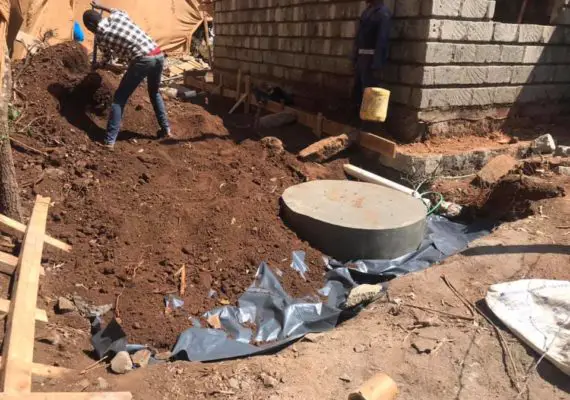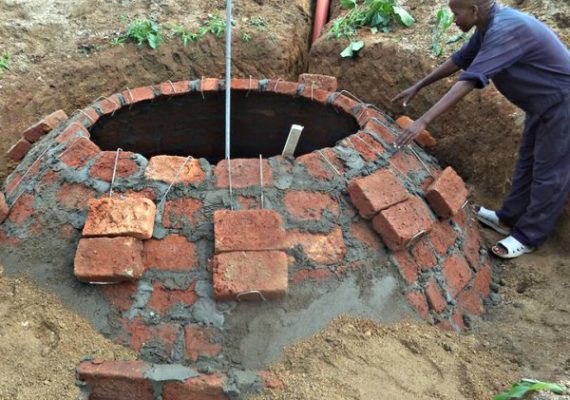What Is Drainage System In House?
What Is Drainage System In House?
A drainage system in a house is a system that is used to remove waste water that has accumulated in the house. This system is typically composed of gutters, downspouts, and drains.
The gutters are installed on the roof of the house and are used to collect the water that falls on the roof. The downspouts are installed on the gutters and are used to transport the water from the gutters to the ground.
The drains are installed on the ground and are used to collect the water that is transported by the downspouts.
The drainage system in a house is responsible for carrying away waste water and sewage from the property. It typically consists of a network of pipes and drains that lead to a central sewer system or septic tank. The system is designed to remove water from the property quickly and efficiently, without causing any damage or flooding.
House drainage system collects and removes wastewater or rainwater that accumulates on the roof and on the ground around your house. It’s an important part of your home’s plumbing.
There are two main types of house drainage systems: a conventional system and a French drain system.
A conventional system uses pipes and a network of underground drains to move the water away from your house.
A French drain system relies on a trench filled with gravel and a perforated pipe to move the water away from your house.
Which type of system you should use depends on your home and the terrain around it. Your drainage system should be designed and installed by a professional.
What Are Basic House Drainage Requirements?
House drainage is important for keeping your home clean and free from water damage. There are a few things that every home owner should know about drainage. First and foremost, your home needs proper drainage in order to prevent water damage.
Second, you need to make sure your home’s drainage system is functioning properly. Finally, you need to regularly check your drainage system to make sure it’s keeping your home dry.
Here are some basic house drainage requirements:
- Have a proper drainage system in place. A proper drainage system includes a drainage ditch, a storm drain, and a municipal drain. In order to prevent water damage in your home, you need to make sure your home’s drainage system is functioning properly. Your home’s drainage system includes pipes and devices that allow water to flow away from your home.
- Keep your gutters clean. Gutters are important for draining water away from your house. Clean them regularly to prevent water from entering your home.
- Check your drainage system regularly. Regularly check your drainage system to make sure it’s functioning properly. If you notice any problems, contact a professional drainage contractor. You should regularly check your home’s drainage system for problems. You can do this by using a water meter to monitor water usage in your home, or by checking your home’s drainage system for obstructions. If you notice any problems with your home’s drainage system, you should call a professional to fix them.
- Clear any obstructions in your drainage system. Remove any objects or debris that could block your drainage system. This includes leaves, branches, and tree limbs.
- Clear your driveway. Clear your driveway of any debris or snow so water can easily flow away from your home.
- Maintain a healthy lawn. Maintain a healthy lawn to help keep water from pooling on the ground.
- Use rain gutters. If you have gutters, use them to collect rainwater. This water can then be used to irrigate your plants or used to clean your gutters.
Primary Purpose Of Drainage System.
The drainage system in your house is the network of pipes and valves that carry wastewater away from your home and into a larger sewer system.
Drainage system in a house is primarily used to remove the water coming out of the house. The primary objective of drainage system in a house is to avoid flooding.
It is absolutely necessary to have an effective drainage system in your home. The drainage system will remove all the moisture from the roof, the walls and the floors of your house. The drainage is carried out through water drains, flood drains, gutters and basins.
Types Of Drainage Systems In A House.
Drainage systems in a house are important, as they help protect the house from structural damage due to overflowing drains.
The two main types of drainage systems in a house are the traditional open drainage system and the closed drainage system.
The open drainage system makes use of several pipes spread out around the house. These pipes are connected to gutters that dispose of the waste water to outer areas. The open drainage system, however, has several disadvantages.
The open drainage system can be easily damaged, especially during stormy weather. This also makes it a hazard for children, who may accidentally step on one of the open pipes.
The drainage pipes are exposed, which may also cause problems. The drainage pipes may be easily clogged because of debris that might be carried into the drain by the water. The exposed pipes also increase the chances of damage to the pipes.
The closed drainage system, on the other hand, makes use of a sump system. The sump system collects all the waste water from the house, and the water is then emptied into the main pipe network.
The sump system, however, has disadvantages as well. One of the primary disadvantages is that it makes cleaning the sump system more difficult. The sump system is not easily accessible, so the cleaning process must be done with great care. Another disadvantage is that under heavy rain, the sump system can easily overflow because of the accumulated water.
Proper Drainage Maintenance.
Proper drainage maintenance is critical to ensuring that your entire drains function properly. Your drains can become backed up or clogged, causing waste to build up in your drains. This can cause the drains to overflow and lead to the flooding of your property.
There are a few steps you should take to ensure that your drains are working perfectly. First, you should make sure the drains are running freely. A clogged drain will slow the flow of water through the pipes. You can check the drains at your property by pouring some bleach in them. This will create a white foamy substance if it runs freely.
If there are no leaks or clogs, the next thing you should consider is how often you need to clean or repair the drain. You should clean your drains at least once every six months. This will ensure that the drain is operating properly and is not causing backups or clogs.
How To Fix A Drainage Problem In A House.
Drains play a very important role in every house. However, drains can become clogged or blocked over time. There are many things that can cause these blockages, including:
- Grease or food: Grease and oil can build up inside the pipes, causing them to clog. Food particles will also cause blockages, so it’s important to keep items like spaghetti or rice out of the drains – especially coffee machines. Hair is also a common cause of blockage, so it’s a good idea to regularly clean the drain with a hair strainer.
- Clogged toilets: Toilets can also become blocked very easily, especially if people flush items like sanitary items, wipes, and diapers into them.
- Tree roots: Tree roots can cause blockages in drains and pipes if a tree is growing nearby. These roots grow to seek moisture and nutrients in the soil, so if they grow into a pipe, they’ll block the flow of water and prevent it from reaching other areas of your property.
![Advantages of Biodigester + How Biodigester Works [A Simple Guide]](https://www.hpdconsult.com/wp-content/uploads/2019/06/maxresdefault-1-570x400.jpg)

